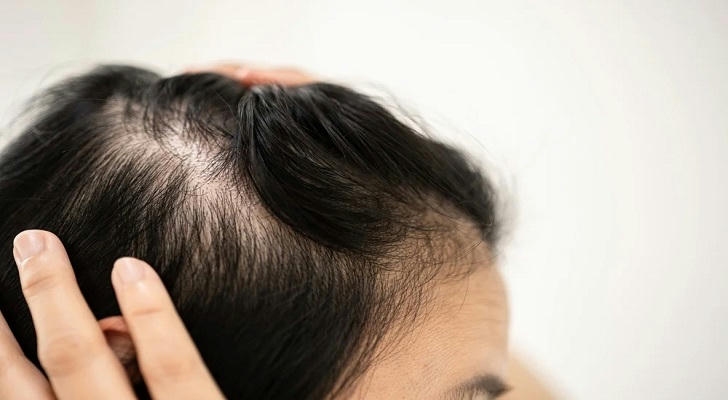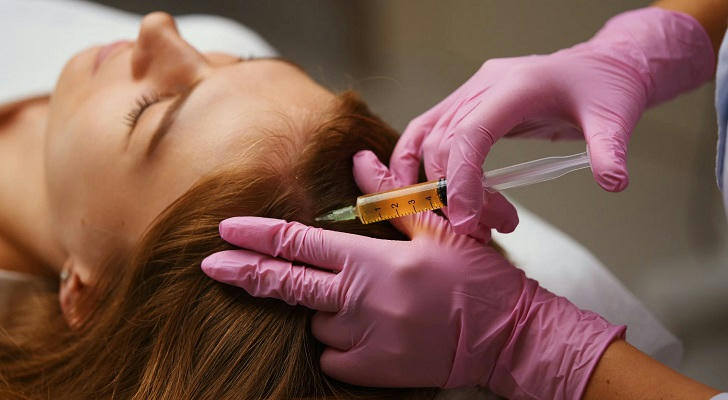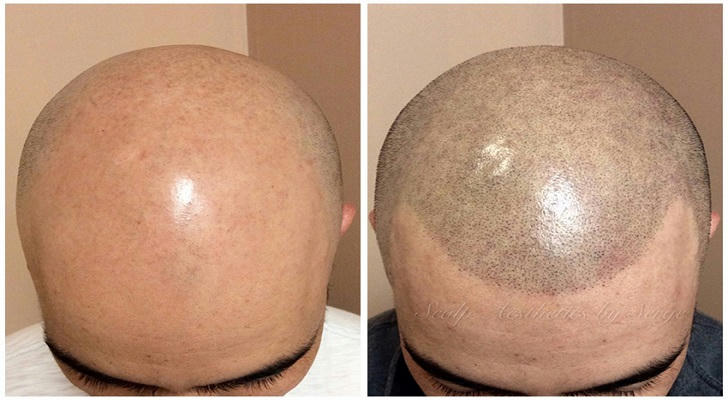Effective Alternatives to Hair Transplantation
Hair transplantation is a popular solution for hair loss, but it is not the only option. Many individuals prefer non-invasive treatments or may not qualify for surgery. Fortunately, several non-surgical hair restoration methods can help slow hair loss, stimulate regrowth, and improve hair density.
Understanding Hair Loss and Its Causes
Hair loss occurs due to various factors, the most common being androgenetic alopecia (male and female pattern baldness). Other causes include:
- Nutritional deficiencies (lack of iron, biotin, or protein)
- Stress and lifestyle factors
- Medical conditions (thyroid disorders, autoimmune diseases)
- Medications and treatments (chemotherapy, certain drugs)
Once the cause is identified, the best course of treatment can be determined.

FDA-Approved Medications for Hair Growth
Minoxidil (Rogaine®)
- Available as a topical solution or foam
- Applied directly to the scalp to stimulate hair growth
- Increases blood flow to hair follicles and prolongs the hair growth phase
- Effective for both men and women
- Results appear after 4-6 months of consistent use
- Possible side effects: Scalp irritation, dryness, temporary shedding
Finasteride (Propecia®)
- A prescription oral medication primarily for men
- Blocks DHT (dihydrotestosterone), the hormone responsible for hair follicle shrinkage
- Slows hair loss and promotes new growth
- Results take 3-6 months to appear
- Possible side effects: Decreased libido, hormonal imbalances
- Not suitable for pregnant women due to potential birth defects
Platelet-Rich Plasma (PRP) Therapy
PRP therapy is a natural, minimally invasive hair restoration treatment.
Procedure:
- A small amount of blood is drawn.
- The blood is spun in a centrifuge to separate platelet-rich plasma.
- PRP is injected into the scalp to stimulate hair follicles.
Benefits:
- Uses the patient’s own blood, reducing allergic reactions
- Improves hair thickness and reduces shedding
- Results seen in 3-6 months, with ongoing treatments recommended
Some patients may experience temporary redness, swelling, or mild discomfort.

Low-Level Laser Therapy (LLLT)
LLLT, also known as red light therapy, is an FDA-approved hair restoration treatment that:
- Increases blood circulation to hair follicles
- Stimulates cellular activity, encouraging hair growth
- Reduces inflammation contributing to hair loss
Types of LLLT Devices:
| Type | Examples |
|-------------|------------|
| Laser Caps | iRestore, Capillus |
| Handheld Combs | Laser combs, brushes |
LLLT is painless and non-invasive but requires consistent use (3-4 times per week for several months) for noticeable improvements.
Scalp Micropigmentation (SMP)
SMP is a cosmetic tattooing technique that creates the illusion of fuller hair.
How It Works:
- A skilled technician applies tiny pigment dots to the scalp.
- It enhances thinning hairlines, adds density, or creates a shaved-head look.
- Results last 4-6 years before requiring touch-ups.
Pros:
✔️ No surgery, no downtime
✔️ Works for all skin tones and hair types
✔️ Immediate improvement in hair appearance
Cons:
❌ Does not regrow hair—purely cosmetic
❌ Requires multiple sessions for best results

Nutritional and Lifestyle Changes for Healthier Hair
Eating a Hair-Healthy Diet
| Nutrient | Sources |
|---|---|
| Protein | Lean meats, eggs, fish, beans |
| Iron & Zinc | Spinach, nuts, red meat |
| Omega-3 Fatty Acids | Salmon, walnuts, flaxseeds |
| Biotin & Vitamin D | Eggs, avocados, sunlight exposure |
Reducing Stress
Chronic stress can trigger telogen effluvium, a condition where hair enters a resting phase and sheds excessively. Managing stress through:
- Exercise
- Meditation
- Better sleep
Avoiding Harsh Hair Treatments
- Limit heat styling and chemical treatments (bleaching, perming)
- Avoid tight hairstyles that strain hair follicles
- Use gentle, sulfate-free shampoos

Combining Multiple Treatments for Best Results
For optimal results, combining treatments often works best:
✅ Minoxidil + PRP Therapy → Boosts new hair growth and thickens hair
✅ Finasteride + LLLT → Slows hair loss while stimulating follicle activity
✅ SMP + Nutritional Changes → Provides an immediate cosmetic fix while improving overall hair health
A dermatologist or hair specialist can help customize the best approach based on individual needs.
Conclusion
Hair loss can be frustrating, but surgical transplants are not the only solution. Non-surgical hair restoration treatments—including medications, PRP therapy, laser therapy, scalp micropigmentation, and lifestyle changes—offer effective and less invasive alternatives.
By exploring these options, individuals can slow hair loss, stimulate new growth, and improve their overall hair health without surgery. Consulting a hair specialist will help determine the best approach based on personal hair loss patterns, budget, and expectations.
With patience, consistency, and the right treatment plan, non-surgical hair restoration can restore confidence and a fuller head of hair.
